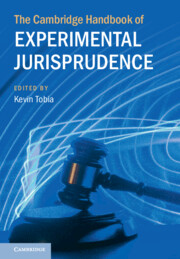Part I - Foundations and Theory
Published online by Cambridge University Press: 17 May 2025
Information
- Type
- Chapter
- Information
- The Cambridge Handbook of Experimental Jurisprudence , pp. 1 - 170Publisher: Cambridge University PressPrint publication year: 2025
